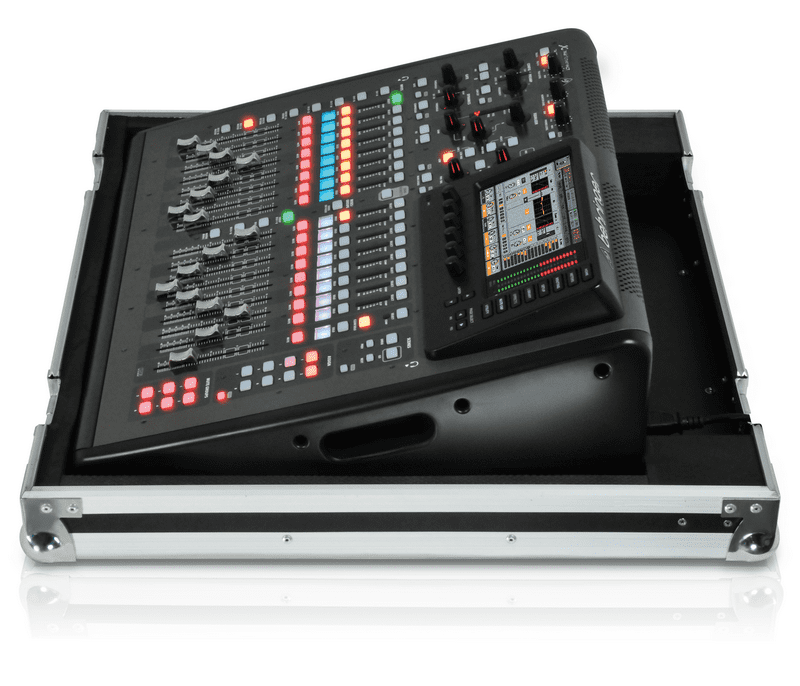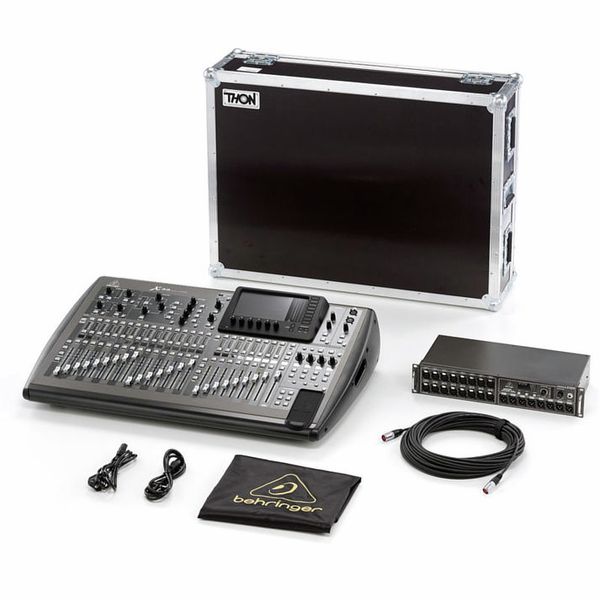

I had assumed that I would be able to assign input channels 9-16 to the right-hand fader bank and have all 16 faders controlling my input mix, but this isn't an option.

Having so many potential input channels to the console and being able to control them with only eight faders across five layers is something I found surprising. The input channels can only be controlled by the eight faders on the left, and are therefore switched in layers to reflect the X32 Compact's 40-channel input count. The pod that houses the main LCD screen and menu buttons has been moved to the right-hand end of the top surface, and as a result the monitor and talkback panelshave been neatly relocated to the top left above the channel preamp controls. All the controls representing the per-channel processors are, however, still there - input configuration, preamp, gate, dynamics and equaliser. Spot The DifferenceĪlthough much of the functionality of the X32 Compact reflects the larger X32, the channel processing controls are grouped into a smaller space and so have a different layout, the most obvious difference being the absence of the aux bus send controls. All you have to do is get used to where the select buttons are (and read the screen) so that you know which channel or bus you're working with. Although this is a somewhat unfamiliar approach to anyone who has only used a traditional analogue console, once you find your way around the control surface you can't go far wrong with this because if you attempt an 'illegal' operation (for example, trying to bring up and adjust the EQ on a DCA group), it simply won't let you. Bus signals are routed to 16 analogue XLR outputs and 6 TRS jack outputs, with two full-size (6.3mm) headphone jacks located (some would say 'hidden') within the lifting recesses at either side of the board - a nice touch, as you can choose which side you are going to have your headphone cable on.Īs with almost all digital mixers, the X32 Compact has a single, comprehensive set of processing controls which act as the 'channel strip' for whichever channel is currently selected, including mix buses where appropriate. Signals are routed using a total of 25 buses, made up of three main ones (left, centre, right) 16 'aux' mixes and six matrix buses, each with parametric EQ and dynamics processors. Just to run down the basic functionality, the X32 Compact has 16 on-board mic preamps and 16 balanced analogue XLR inputs, with six local auxiliary inputs (line level on TRS jacks, with additional unbalanced RCA connectors on inputs 5 and 6 for things like CD players), and a further 16 inputs available via the AES50 ports. We took an in-depth look at the technical and practical aspects of the original X32 last year ( ), and it would be worth reading that review as much of the technical detail applies to the X32 Compact. However, the output busing and master-section functionality from the full-size X32 are still there, just as they would be on the larger unit.

Anyone involved with live sound is likely to have at least heard of the X32, and the quick way to describe the X32 Compact is as an X32 without the first eight channel faders - although to keep the size down, the control layout has been redesigned (and some controls have been removed altogether), while the number of XLR inputs and outputs has been halved. Aside from the original X32 there are now four other variants either in, or on the point of joining, the product line-up: the X32 Core, the X32 Rack, the X32 Producer, and the one that is currently on my desk, the X32 Compact.

The Behringer X32 has already caused quite a stir in the affordable digital mixer world, not only because of its low price but also the association with, and inclusion of, design and technology from the well-known Midas and Klark-Teknik stables, both of which are now part of the Behringer family. The X32 Compact takes the heart of Behringer's flagship console and crams it into a cheaper, smaller package.


 0 kommentar(er)
0 kommentar(er)
